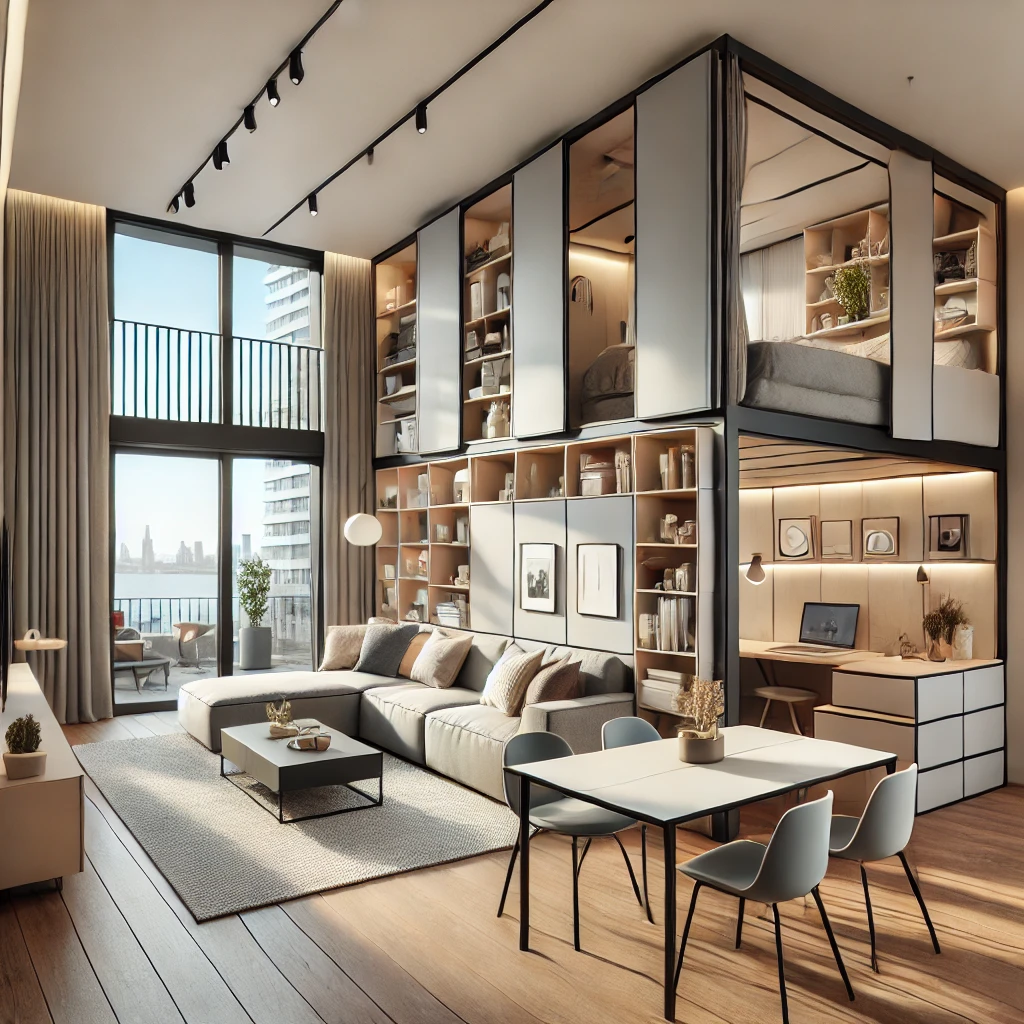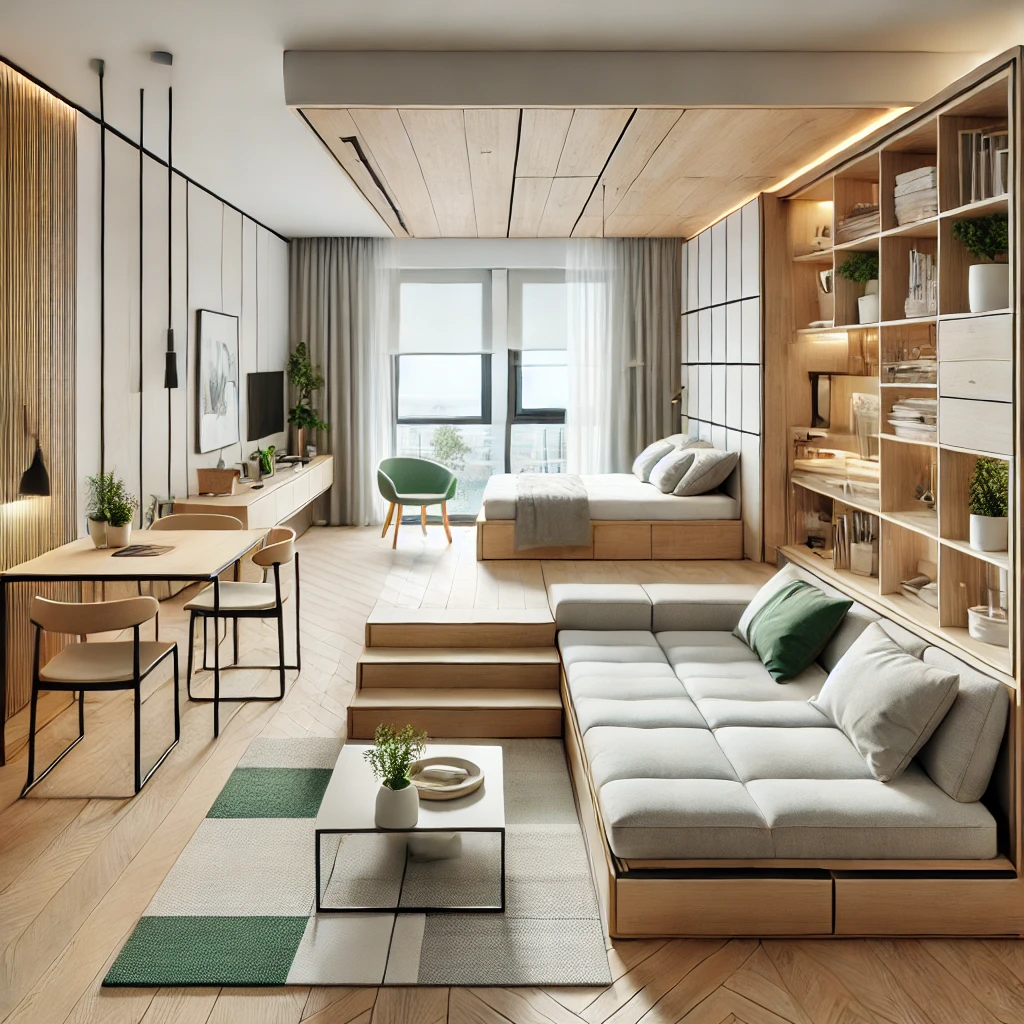In today’s fast-paced world, the demand for multifunctional spaces is rapidly growing. Whether it’s a home office doubling as a guest room or a dining area that transforms into a workspace, flexibility is key in modern interior design. Multifunctional spaces can maximize square footage, enhance usability, and increase comfort — all while maintaining a stylish, cohesive look.

Why Multifunctional Spaces Matter
With the rise of remote work, urban living, and the need for greater versatility in our homes, multifunctional spaces have become essential. The concept involves designing rooms that serve more than one purpose, giving homeowners the freedom to adapt their spaces as needs evolve.
Here are just a few reasons why multifunctional spaces are important in modern design:
– Maximizing Space: Especially in smaller homes or apartments, every square foot counts. By designing rooms with dual purposes, you can make the most out of limited space.
– Flexibility for Changing Needs: As families grow, hobbies evolve, or work-from-home needs arise, having flexible spaces allows for easy adaptation.
– Enhanced Functionality: Creating multifunctional rooms means that each space in your home is optimized for usability and comfort, making your daily routine more efficient.
Key Design Strategies for Multifunctional Spaces
Designing for flexibility doesn’t mean sacrificing style. In fact, the most successful multifunctional spaces are both functional and beautiful. Here are some essential strategies to help you design a space that adapts to your needs without compromising on aesthetics.
1. Invest in Multi-Purpose Furniture
When designing for flexibility, the right furniture is crucial. Look for pieces that can serve multiple functions and adapt to different activities. For example:
– Sofa Beds or Daybeds: In small apartments or homes without a guest room, a sofa bed can transform a living room into a cozy guest space. Alternatively, a daybed works as both seating and a sleeping area.
– Extendable Dining Tables: If you often entertain guests but don’t want a large dining table taking up space, an extendable table offers flexibility. You can keep it compact for everyday use and expand it when you need extra seating.
– Storage Ottomans and Benches: Furniture that doubles as storage is invaluable in multifunctional spaces. A storage ottoman can act as a coffee table, footrest, and a place to store blankets or books, keeping the room clutter-free.
– Foldable or Modular Furniture: Foldable desks, chairs, or wall-mounted drop-leaf tables can be stowed away when not in use, freeing up valuable floor space.
2. Create Zones to Define Spaces
One of the biggest challenges in multifunctional spaces is ensuring that each function feels distinct without completely dividing the room. Creating “zones” within a space allows for different activities without sacrificing flow. Here’s how to do it:
– Rugs to Define Areas: Use area rugs to visually separate different functions within an open space. For example, a rug under the dining table can delineate the dining zone, while a different rug defines the living area.
– Furniture Placement: Arrange furniture to create natural boundaries. For example, place a bookshelf or console table behind a sofa to act as a partition between a living room and a workspace.
– Dividers or Curtains: If you want a more defined separation, consider using room dividers, screens, or even curtains. They can create privacy without the permanence of walls, allowing you to change the layout as needed.
3. Use Vertical Space for Storage
In multifunctional rooms, floor space can be at a premium. That’s why it’s essential to utilize vertical space for storage. Think beyond just floor-level shelving and consider installing storage solutions that go up the walls.
– Floating Shelves: Floating shelves provide extra storage without taking up floor space. They can hold books, decorative items, or work supplies, depending on the room’s function.
– Tall Storage Units: Tall bookshelves or cabinets maximize storage while taking up minimal floor space. Opt for units with both open and closed sections to keep essentials within reach while concealing clutter.
– Wall-Mounted Desks: If you’re short on space for a full desk, a wall-mounted desk is a fantastic option. It can be folded up when not in use, allowing you to free up space instantly.

4. Embrace Flexible Lighting Solutions
Lighting plays a significant role in creating multifunctional spaces. Different activities require different types of lighting, so it’s essential to design with flexibility in mind.
– Layered Lighting: Create multiple lighting layers with a combination of task, ambient, and accent lighting. For example, a pendant light over the dining table can provide general illumination, while adjustable floor lamps near a desk offer focused task lighting.
– Dimmable Lights: Dimmable lighting allows you to adjust the brightness depending on the activity. Bright lights are ideal for working or cooking, while dim lighting can create a relaxing ambiance for lounging or entertaining.
– Portable Lamps: Use portable or plug-in lamps that can easily be moved to different areas of the room based on the task at hand. A stylish floor lamp, for instance, can function as reading light in the living room or task lighting in a home office.
5. Opt for Neutral and Versatile Color Palettes
When designing multifunctional spaces, it’s essential to choose a color palette that is versatile and can work across different zones. Neutral tones or muted shades create a cohesive look while allowing you to add accents through furniture or décor.
– Neutral Walls: Opt for light, neutral-colored walls, which make the room feel larger and more open. This provides a backdrop that can adapt to various uses.
– Accent Colors: Use pops of color in accessories, such as cushions, throws, or artwork, to bring personality to the space without overwhelming it.
Multifunctional spaces are the future of home design, offering flexibility, adaptability, and style. Whether you’re working with a small apartment or a large home, designing spaces that serve more than one purpose is both practical and creative. By incorporating multi-purpose furniture, creating zones, and using vertical space and flexible lighting, you can design a home that adapts to your lifestyle seamlessly.
Right design choices can turn any room into a dynamic, multifunctional space. The key is balancing functionality and aesthetics, ensuring that your home not only looks beautiful but works hard for you every day.






